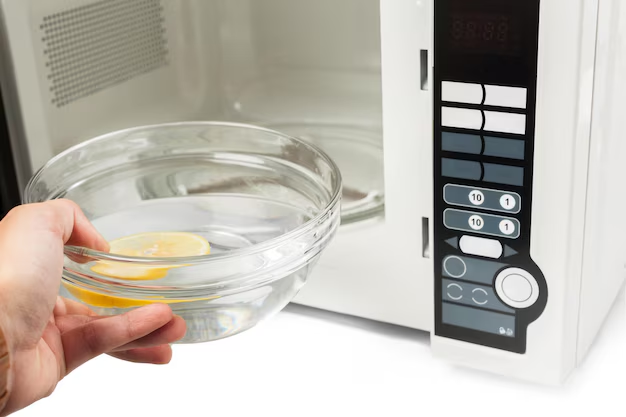Understanding Refrigerator Energy Use: How Many Watts Does Your Refrigerator Consume?
When it comes to managing household energy consumption, many overlook the trusty refrigerator humming gently in the kitchen. Often running non-stop, refrigerators are a critical part of daily life, preserving food and keeping beverages cold. Yet, understanding how much energy your refrigerator uses—and what that means for your energy bills and environmental impact—can be less obvious. In this article, we'll dive deep into the wattage of refrigerators, discuss related topics in energy efficiency, and provide practical tips for optimizing energy consumption.
The Basics: Refrigerator Wattage Explained
A refrigerator’s wattage gives us a peek into its energy consumption. But what exactly does that mean in practical terms?
What is Wattage?
Wattage is a measure of electrical power expressed in watts (W). It indicates how much energy a device uses. When you look at your refrigerator, the wattage tells you how much power it requires to operate. Generally, the higher the wattage, the more electricity a device uses.
Typical Wattage for Refrigerators
Modern refrigerators typically range from about 100 to 800 watts, but this can vary based on size, model, age, and efficiency standards. A small mini-fridge may use anywhere from 85 to 300 watts, while larger commercial models might reach upwards of 1,000 watts or more.
Calculating Energy Use
To understand how much electricity your refrigerator uses over time, you need to convert the wattage into kilowatt-hours (kWh), using this formula:
[ ext{Daily Energy Use (kWh)} = frac{ ext{Wattage (W)} imes ext{Hours of Operation}}{1000} ]
For instance, a 200-watt refrigerator running continuously for 24 hours uses:
[ frac{200 imes 24}{1000} = 4.8 , ext{kWh per day} ]
Factors Influencing Refrigerator Energy Consumption
Understanding the variables that affect your refrigerator's energy use can help you manage its efficiency more effectively.
Size and Model
- Compact vs. Full-Size: Generally, larger refrigerators consume more power than smaller ones. Consider your needs: do you require a big family fridge, or will a more compact model suffice?
- Energy Star Models: These models are designed to save energy without sacrificing functionality, often reducing energy usage by 10-20% compared to non-certified models.
Age and Efficiency
- Older Models: Aging refrigerators are typically less efficient; modern units incorporate significant advancements in energy-saving technology.
- Maintenance: Dusty coils or inadequate sealing can increase energy consumption. Regular cleaning and maintenance can make a notable difference.
Usage Patterns
- Door Openings: Frequently opening the fridge lets cold air escape, causing the compressor to work harder, increasing energy usage.
- Content Volume: A fully packed refrigerator versus an empty one has a different energy impact. Use organizational strategies to maximize air circulation.
Enhancing Refrigerator Efficiency: Practical Tips
To stretch your energy dollars further and tread more lightly on the environment, consider these suggestions:
Smart Refrigerator Choices
- Optimize Settings: Keep temps at optimal levels: around 37-40°F for the fridge and 0°F for the freezer.
- Defrost Regularly: Manual defrost models should be defrosted regularly to maintain efficiency.
Maintenance Habits
- Clean Coils: Dust-free condenser coils improve efficiency. Aim for a cleaning every six months.
- Seal the Deal: Check the refrigerator door seal with the "dollar bill test"—if a bill easily slips out when the door is closed, the seal may need replacing.
Energy Management
- Strategic Placement: Position fridges in a cool area away from direct sunlight and heat sources like ovens to minimize energy draw.
- Cycle Optimization: Avoid placing hot leftovers directly into the fridge; allow them to cool first to reduce compressor strain.
The Role of Smart Technology in Refrigerator Efficiency
Advancements in technology have given rise to "smart" refrigerators with features that can revolutionize the way we consume energy.
Smart Refrigerators
- Energy Tracking: Many models come with built-in energy trackers that help you monitor and adjust consumption.
- Automation and Alerts: Receive alerts if you've left the door ajar, or adjust temperature settings through an app.
- Efficiency Programs: Some smart fridges are equipped to dynamically adjust power settings during peak hours for energy savings.
🌟 Quick Tips for Refrigerator Efficiency 🌟
Here's a swift summary of practical steps to enhance refrigerator energy efficiency:
- 🔌 Select Energy Star: Opt for Energy Star certified models.
- 🌡️ Set Right Temperature: Maintain fridge at 37-40°F; freezer at 0°F.
- 🚪 Seal Check: Perform the dollar bill test on door seals.
- 🧼 Regular Maintenance: Schedule coil cleaning every six months.
- 📲 Embrace Smart Tech: Use appliance apps for monitoring.
- 🇷 Think Positioning: Keep your fridge away from ovens and direct sun to maintain efficiency.
Final Reflections: The Impact of Refrigerator Energy Use
Your refrigerator doesn't just keep your groceries fresh; it plays a notable role in your home's energy footprint. Understanding its wattage usage provides insights into managing energy expenses and reducing environmental impact. By selecting efficient models, performing regular maintenance, and embracing modern technology, you take significant steps towards optimizing energy consumption and promoting sustainability in everyday life.
Consider these strategies and tips as part of a broader effort to enhance energy efficiency across your home, achieving cost savings and contributing positively to a greener future.
